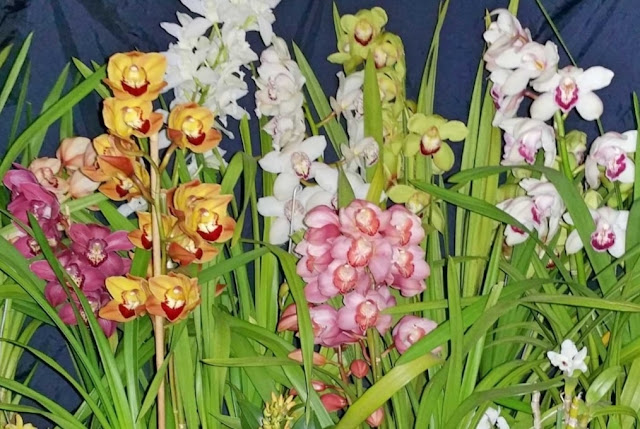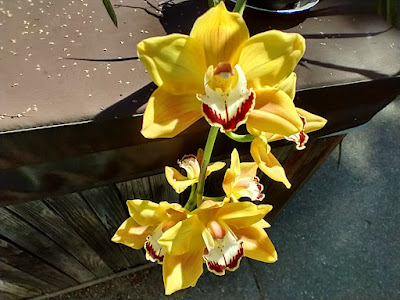
Orchid event spotlights semi-tropical favorite that thrives outdoors

|
|
Cymbidiums at their peak of bloom will be on display Saturday. (Photo courtesy of Sacramento Valley Cymbidium Society)
|
Among the many flowers that bloom in March in Sacramento are spectacular orchids – outdoors.
Cymbidiums, also known as boat orchids, bloom in massive clusters on three-foot-long spikes. With a little protection against frost, these orchids thrive in Sacramento’s mild climate. It’s exposure to temperatures below 55 degrees in winter that prompts all those flowers.
See scores of locally grown cymbidiums in full bloom on Saturday during a spectacular Sacramento show – and take some home, too.
The
Sacramento Valley Cymbidium Society
hosts its spring show and sale from 10 a.m. to 4 p.m. Saturday, March 26, at Shepard Garden and Arts Center in McKinley Park. Parking and admission are free.
Society members will be on hand to offer growing tips for these semi-tropical wonders. Cymbidiums appreciate Sacramento’s summer warmth – as long as they have a place in the afternoon shade and sufficient water.
“We look forward to welcoming you to see our plants, learn how to repot any pot-bound plants you may have or inherited, and buy repotting product,” the club posted on Facebook. “We will also be raffling off a plant as a door prize – free ticket!”
Judging by my own plants, our mild winter produced wonderful cymbidium growing conditions. In my garden, one large yellow cymbidium has 17 big blooms, divided between two tall spikes.
These flowers are long lasting, too; the blooms will stay on the plant for several weeks.
Learn more Saturday at this orchid show and sale. Shepard Center is located at 3330 McKinley Blvd., Sacramento.
Questions? Please email Lee Turner at turnermuecke@sbcgloval.net.
Details and directions:
www.sgaac.org
.
— Debbie Arrington

|
|
Some of the 17 big blooms on Debbie's cymbidium. (Photo: Debbie Arrington)
|
Comments
0 comments have been posted.Sacramento Digs Gardening to your inbox.
Sites We Like
Garden Checklist for week of July 21
Your garden needs you!
* Keep your vegetable garden watered, mulched and weeded. Water before 8 a.m. to reduce the chance of fungal infection and to conserve moisture.
* Feed vegetable plants bone meal, rock phosphate or other fertilizers high in phosphate to stimulate more blooms and fruiting. (But wait until daily high temperatures drop out of the 100s.)
* Don’t let tomatoes wilt or dry out completely. Give tomatoes a deep watering two to three times a week.
* Harvest vegetables promptly to encourage plants to produce more. Squash especially tends to grow rapidly in hot weather. Keep an eye on zucchini.
* Pinch back chrysanthemums for bushy plants and more flowers in September.
* Remove spent flowers from roses, daylilies and other bloomers as they finish flowering.
* Pinch off blooms from basil so the plant will grow more leaves.
* Cut back lavender after flowering to promote a second bloom.
* It's not too late to add a splash of color. Plant petunias, snapdragons, zinnias and marigolds.
* From seed, plant corn, pumpkins, radishes, winter squash and sunflowers.